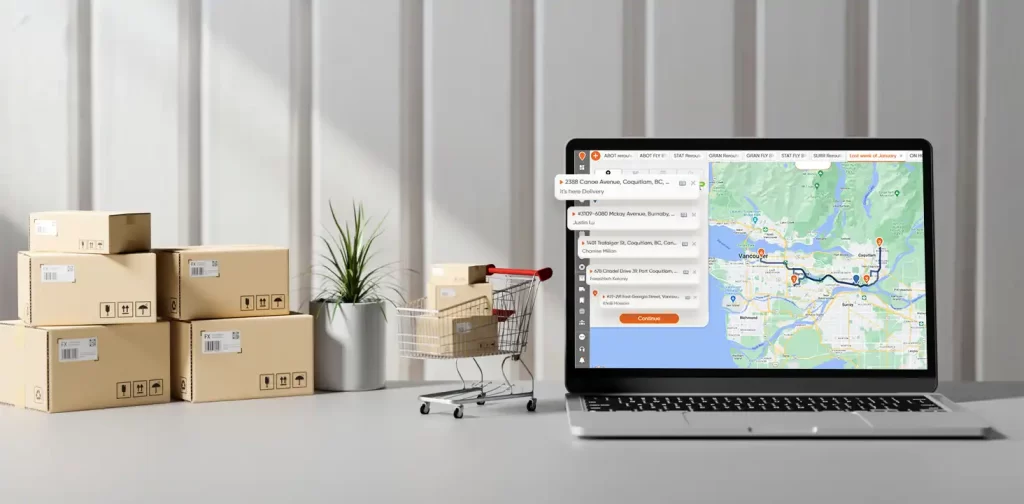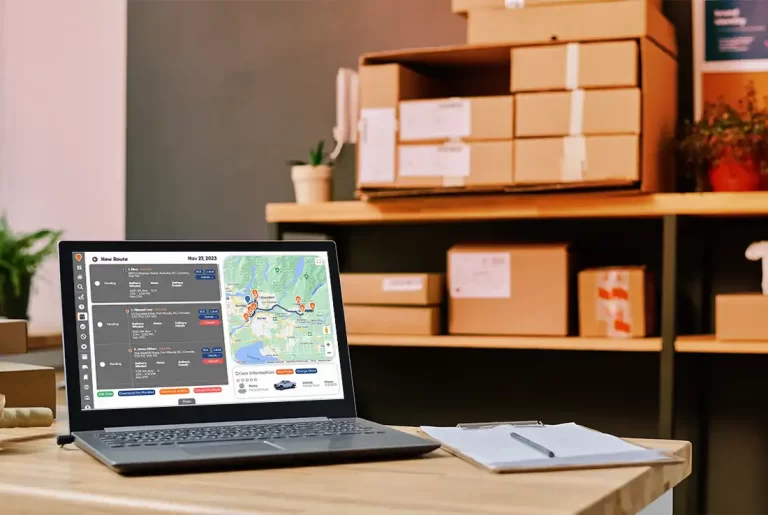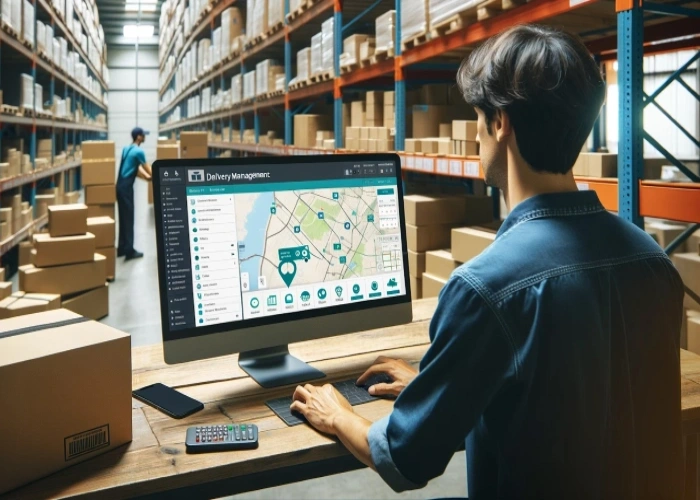Delivery Management Optimization involves overseeing a range of processes to ensure the efficient and effective transfer of goods from one location to another. This article will explore the most effective strategies for enhancing delivery management and the benefits of investing in appropriate tools.
The Importance of Delivery Management Optimization
In today’s fast-paced world, where customer satisfaction directly ties into the speed and efficiency of your delivery service, optimizing delivery management isn’t just an option; it’s a necessity. Delivery management optimization ensures that your products reach your customers in the shortest possible time, with the least expense, and in the best condition.
Challenges in Delivery Management
Managing a delivery system comes with its set of challenges, from unpredictable traffic conditions to managing customer expectations. Understanding these obstacles is the first step in overcoming them.
Enhancing Supply Chain Visibility
Visibility into every stage of the supply chain is crucial for pinpointing inefficiencies and making informed decisions. It’s Here Delivery Management Software plays a vital role in achieving this visibility, offering real-time tracking and management capabilities.
What does “it’s here Delivery Management Software” (DMS)?
In a nutshell, it provides you with full visibility tools for route optimization such as real-time tracking, and efficient scheduling, all of which contribute significantly to optimizing delivery operations.
Optimizing Delivery Operations for Your Business

It is crucial to tailor the optimization strategies to fit your specific business needs. This includes efficient routing and scheduling, leveraging data for improved operations, and decision-making through data-driven technology.
Efficient Routing and Scheduling
“Efficient routing through delivery optimization minimizes fuel consumption and environmental impact. At “it’s here,” we offer two real-time measured options for each route to offer flexibility and even full control of the route if you need to jump in and get full control of the wheel. Leveraging algorithms and real-time data. You’ll dynamically adapt to traffic, priorities, and challenges, boosting efficiency and satisfaction.”
CEO. it’s here”
Technology Integration
Adopting the right technologies can streamline operations, reduce errors, and improve efficiency.
Streamlining Operations
- Automation of Repetitive Tasks
- Improved Communication
- Enhanced Project Management
Reducing Errors
- Data Accuracy
- Consistency in Processes
Improving Efficiency
- Faster Decision Making
- Resource Optimization
- Enhanced Customer Experience
Key Considerations for Technology Integration
- Needs Assessment
- Scalability
- Employee Training
- Cybersecurity Measures
Training and Development for Staff
Well-trained staff can make the most of the technology at their disposal, leading to more efficient delivery operations.
Strategies for Effective Training and Development
- Conducting Needs Assessment
- Creating Customized Learning Paths
- Embracing a Blended Learning Approach
- Leveraging Technology in Training
- Fostering a Continuous Learning Culture
- Implementing Feedback and Evaluation Mechanisms
- Promoting Peer Learning and Mentoring
Benefits of Training and Development
- Enhancing Efficiency Through Skill Enhancement
- Improving Service Quality
- Boosting Employee Satisfaction and Retention
- Building Organizational Adaptability
- Encouraging Innovation and Creative Problem-Solving
How to Optimize Your Delivery Management

Key Performance Indicators (KPIs) are crucial for measuring the effectiveness and efficiency of your delivery management system. Here are several KPIs that could help you track performance and identify areas for improvement:
1. Delivery Time
- On-time Delivery Rate:
Measures the reliability of meeting delivery deadlines.
- Average Delivery Time:
Indicates the efficiency of the delivery process.
2. Operational Efficiency
- Route Optimization:
Assesses improvements in reducing travel distances and times.
- Capacity Utilization:
Evaluate how effectively resources are used for deliveries.
3. Customer Satisfaction
- Customer Satisfaction Score (CSAT):
Reflects direct customer feedback on delivery experiences.
- Net Promoter Score (NPS):
Gauges customer loyalty and the potential for recommendations.
4. Cost Management
Cost per Delivery:
Calculates the efficiency and profitability of delivery operations.
Return Rate:
Identifies potential issues in product quality or delivery services.
5. Driver Performance
Driver Satisfaction:
Measures the satisfaction levels of drivers.
Accidents per 100,000 Kilometers:
Tracks the safety and effectiveness of delivery operations.
| KPI | Benchmark Example | Description |
| On-time Delivery Rate | ≥ 95% | At least 95% of all deliveries should be on time to ensure high customer satisfaction. |
| Average Delivery Time | ≤ 24 hours for local deliveries | Local deliveries should ideally be completed within 24 hours from order placement. |
| Route Optimization | 10% reduction in travel distances | Aim for a 10% reduction in travel distances year-over-year through effective route planning. |
| Capacity Utilization | ≥ 80% | Aiming for at least 80% utilization of delivery capacity to maximize resources. |
| Customer Satisfaction Score (CSAT) | ≥ 90% | Strive for a CSAT score of 90% or above, indicating high customer satisfaction with the delivery service. |
| Net Promoter Score (NPS) | ≥ 70 | A benchmark NPS of 70 or above is considered excellent and indicative of high customer loyalty. |
| Cost per Delivery | Reduction of 5% YoY | Target a year-over-year reduction of 5% in the cost per delivery to improve profitability. |
| Return Rate | ≤ 2% | Keeping the return rate below 2% can indicate good quality control and customer satisfaction. |
| Driver Satisfaction | ≥ 85% | Aim for at least 85% satisfaction among drivers to ensure a motivated and efficient workforce. |
| Accidents per 100,000 Miles | ≤ 1 | Aim for fewer than one accident per 100,000 miles to maintain high safety standards. |
| System Uptime | ≥ 99.9% | The delivery management system should have an uptime of 99.9% to ensure reliability. |
| Adoption Rate | ≥ 90% | At least 90% of the team should be effectively using the delivery management software to ensure full benefits. |
How to Optimize Delivery Operations in the Business

Businesses can further optimize their delivery operations by focusing on inventory management and establishing a feedback loop with customers to continuously improve the delivery experience.
Inventory Turnover Rate:
This KPI measures how many times inventory is sold or used over a specific period, indicating the efficiency of inventory management. A furniture retail store should aim for an inventory turnover rate of 1.2 times per year, as this is the average for the industry. Higher rates suggest efficient inventory management, while lower rates may indicate overstocking or slow-moving inventory (FinModelsLab).
Gross Profit Margin:
It measures the percentage of sales revenue remaining after accounting for the cost of goods sold. For furniture stores, for instance, the gross profit margin typically ranges between 25-35% of gross sales. This can vary greatly depending on factors like the type of furniture sold and the store’s location. Gross profit margin is crucial for understanding the costs associated with operating a furniture retail store and ensuring products are priced competitively (FinModelsLab).
Sales Conversion Rate:
This KPI tracks the percentage of visitors (to the store or website) who make a purchase. Industry benchmarks can vary, with e-commerce platforms seeing conversion rates around 2-3%, while brick-and-mortar stores might reach up to 10-15%. This metric is pivotal for evaluating the effectiveness of marketing and sales strategies in furniture retail stores (Financial Model Templates).
It’s here” offers comprehensive analytics for your company. (2024)
Inventory Management
Effective inventory management ensures that products are ready to be delivered at the right time, reducing delays and improving customer satisfaction.
Customer Satisfaction and Feedback Loop
Listening to customer feedback can offer valuable insights into areas of improvement and directly contribute to optimizing delivery operations. Ratings are one of the features covered by it’s here. This not only protects your reputation and keeps “haters” under control when something comes up, but also provides clear visibility about mistakes that could negatively impact your end customer.
Measuring the Success of Delivery Management Optimization
It’s crucial to measure the impact of optimization efforts through key performance indicators (KPIs) to ensure that the changes deliver the desired outcomes.
Wrap-Up
Optimizing delivery management is vital for enhancing customer satisfaction, reducing operational costs, and improving efficiency. It’s here Delivery Management Software offers a comprehensive solution that can significantly contribute to achieving these goals. Embracing optimization tactics benefits your business and enhances the overall customer experience.
FAQs
1. What is delivery management optimization?
Delivery management optimization involves improving various aspects of the delivery process, including routing, scheduling, and tracking, to enhance efficiency, reduce costs, and improve customer satisfaction.
2. How does it’s here Delivery Management Software improve delivery operations?
It offers real-time tracking, efficient route planning, and scheduling features that streamline the delivery process, making it faster and more cost-effective.
3. What are the key components of optimizing delivery operations?
Key components include efficient routing and scheduling, leveraging technology and data analytics, training staff, and maintaining a feedback loop with customers.
4. How can businesses measure the success of their delivery optimization efforts?
Success can be measured using key performance indicators such as delivery times, customer satisfaction scores, and the cost per delivery.
5. Why is customer feedback important in delivery management optimization?
Customer feedback provides insights into what is working well and what needs improvement, allowing businesses to continuously refine their delivery processes for better efficiency and satisfaction.




